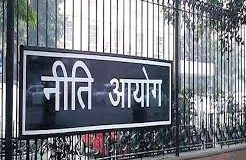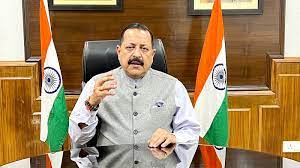Such a mask, though rudimentary in its action for containing the viral diffusion across the fabric layer, is expected to reduce the transmission of micro-droplets that linger in the air even during a simple conversation, let alone sneezing. Simple, often, homemade ones are advised for healthy individuals rather than those meant for health workers as there is limited supply of the latter. If only the choice of the fabric can be made intelligently, the mask can serve the purpose more efficiently.
A team of researchers at the Centre for Nano and Soft Matter Sciences (CeNS), Bangalore, an autonomous institute of the Department of Science and Technology (DST), have come up with a recipe for making face masks, termed as TriboE Mask, that can hold electric charges to restrict the entry of infections but interestingly, without any external power.The innovation by Dr. PralaySantra, Dr. Ashutosh Singh, and Prof. Giridhar U. Kulkarni relies on electrostatics. When two non-conducting layers are rubbed against each other, the layers develop positive and negative charges instantly and continue to hold the charges for some time. They have used this electric field, quite strong at proximity, to deactivate or possibly even kill the germs.
“We have borrowed ideas from physics textbooks on triboelectricity; something kids enjoy playing with. When used in the context of a face mask, the idea can translate into a product, realisable by the end-user without the need of industry developing or manufacturing it. The mask is inexpensive and doable by anyone!” Prof. Kulkarni said. He added that tests on these masks are being performed, particularly in the context of COVID 19.
Professor Ashutosh Sharma, Secretary, DST, said, “It is interesting that several new and useful COVID-10 solutions have emerged by creative applications of basic principles of chemistry, physics, materials, and bio-sciences, often by stitching together of simple insights to provide an interdisciplinary solution. The mask proposed here is a good example of such a creative process that adds huge value by a simple design.”
The mask is three-layered –a layer of nylon cloth sandwiched between polypropylene layers, the latter sourced from commonly used non woven grocery bags. In place of nylon, silk fabric from an old saree or shawl may also be cut and used. When layers are rubbed against each other, the outer layers develop negative charges, while nylon will hold the positive charges. This will act as double electric wall protection against the infectious entities crossing. As the mask is made out of commonly available fabrics, it can be washed just like any other cloth and can be reused. At this stage,the mask is, however, not recommended to healthcare professionals and patients.

TriboE mask comprising of polypropylene layers on the outside and nylon layer in between. When the layers are rubbed against each other, static electricity is produced, which is expected to restrict the possible transmission of infections.
 Indian Industry Plus A Pratisrutiplus Suppliment
Indian Industry Plus A Pratisrutiplus Suppliment


















